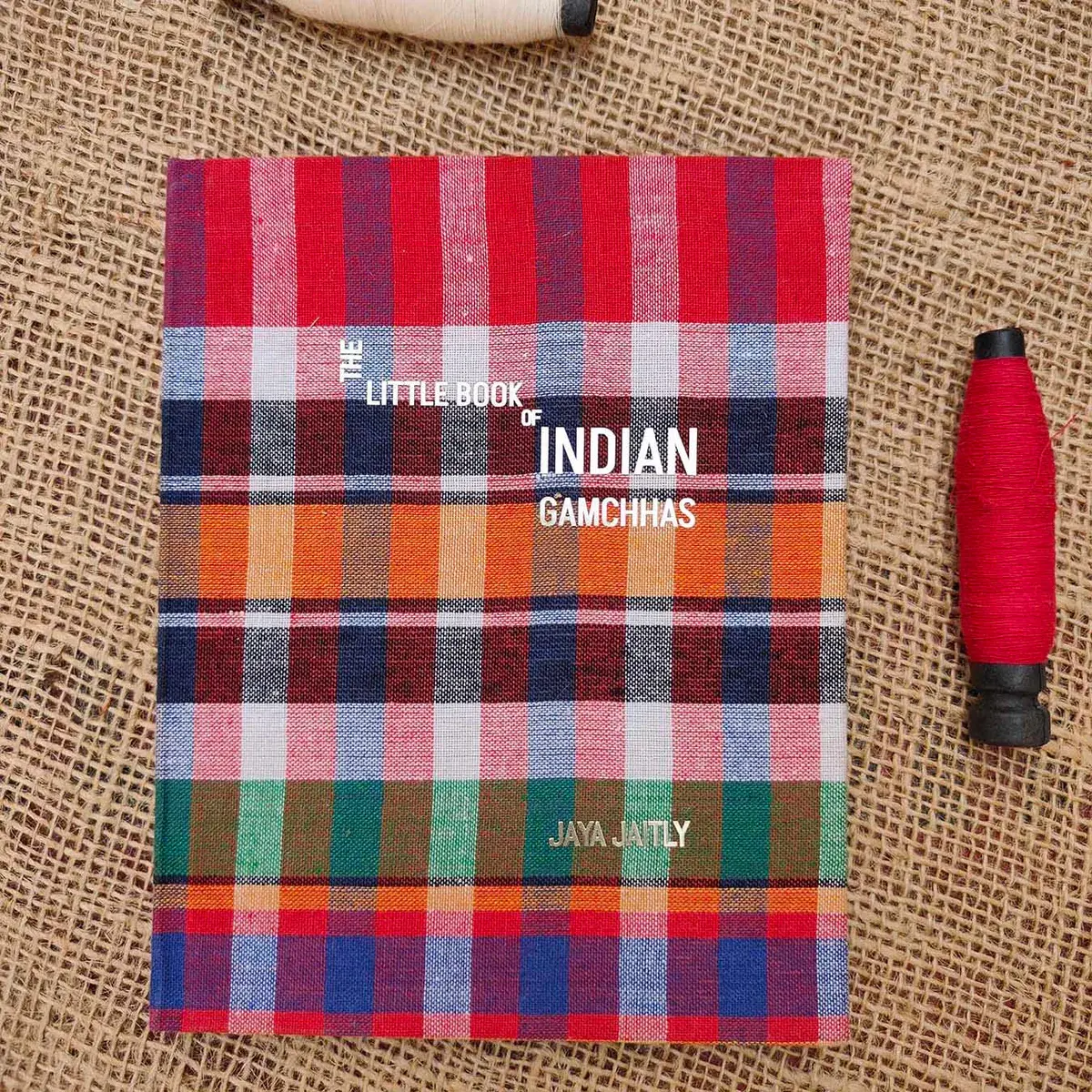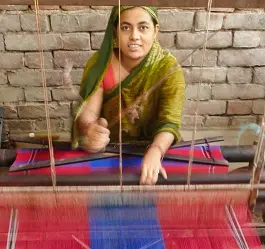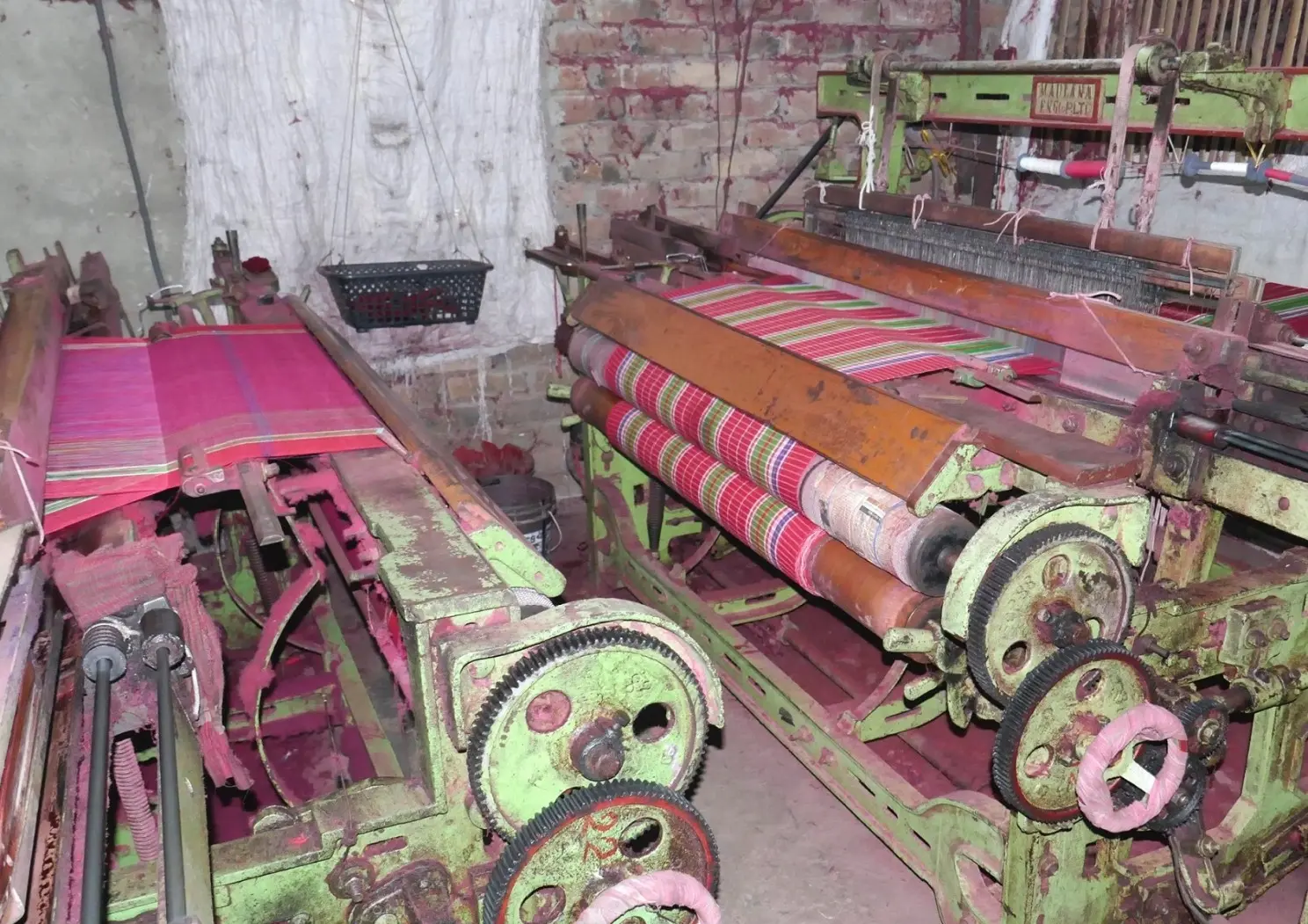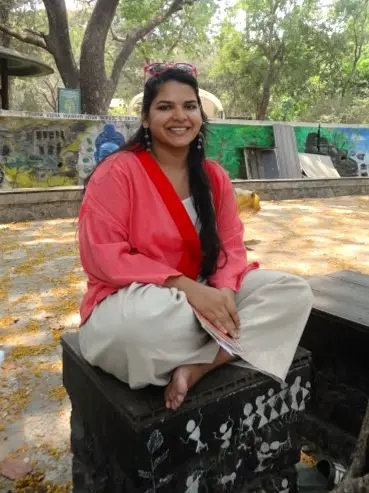Growing up, the word “Gamchha” only translated to one single thing – a towel. But now, after studying fashion for almost 8 years, it means much more. It has become one of my top 3 textiles to create with alongside Kala cotton & khadi. (Not only are these fabrics truly indigenous to India, they all carry their own unique feeling & texture.)
Now the word “Gamchha” evokes various pictures & articles in my mind that I have seen following my love for this fabric. To complement this love, I also found this lovely book by Jaya Jaitly called – The little book of Indian Gamchhas – Capturing the weaver & the wearer of the humble Gamcha.

Photo: dastkarihaat.com
Gamchha is a lot of things to a lot of people, especially the working-class community of India. It’s the color on the white kurta-dhoti, the quickest reaching handkerchief hanging right on the shoulder, headscarf shielding from the sun, and the quickest drying towel before any “quick-dry” term was invented.
With every mass-produced product also comes its exploitation in trade lines. This article by Archana Shah - Gamchha Weaving - describes the problems around the production of the fabric, wherein men who usually weave this fabric (in West Bengal) are migrating to the Middle East for better earnings, the women surviving on meagre pay, declining quality and the production moving from handloom to power loom, taking away the essential livelihood of thousands.


Photos: https://www.bandhej.com/blog/post/gamcha-weaving
An excerpt from the article by Archana: “Between Tantipur and Rejilapara villages, there were almost 25,000 weavers, mostly women, weaving gamchas. However, to further reduce the cost, gamcha production is slowly moving to the power looms, operated by men. A single man handles the production of two to three power looms. Production has increased, and the cost of production is marginally lower, but the women who have been weaving gamchas are being deprived of their livelihood.”
While the exploitation and ill-distribution of profit continues. New non-profits, govt. bodies & businesses are coming forward to give the weaver and the fabric itself a new light.
- Non-profit organisations are reviving dead clusters of weavers that were making the Gamchhas in various states of India. And supporting weaver-artisans by training and connecting them to the right markets.
- Businesses are creating new demand by contemporizing the designs of the textile & the end garment.

Photo: Gamcha Kimono from Asian in Me
May this diversely beautiful fabric see new horizon of growth in form of ethical production and consumption. And may it continue to thrive in an ever-changing world.
Note: The "Gamcha kimono" is currently not listed on our website and is available in form of made-to-order. You can drop us a message on contact@asianinme.com to place an order.